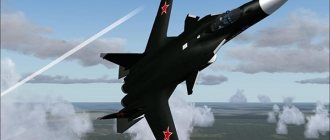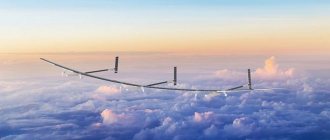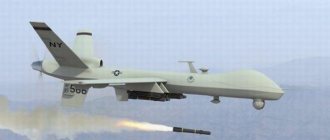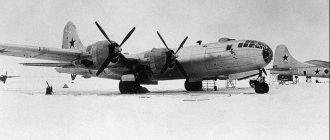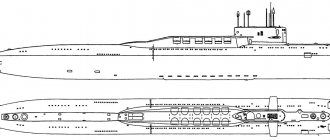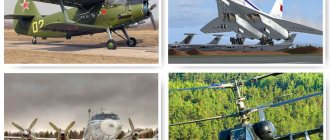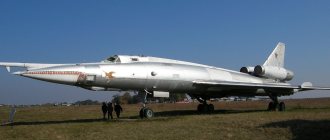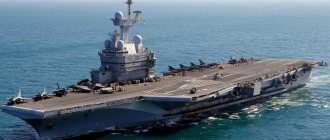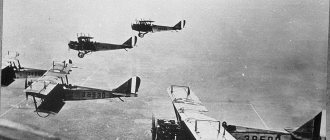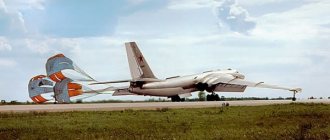New strategic missile carrier "Shadow" and other aircraft of the future for the Aerospace Forces
The Russian Air Force, which today is part of the Aerospace Forces of the Russian Federation, celebrated the 107th anniversary of its formation on August 12, and two more anniversary dates were also celebrated. July 29 marked the 80th anniversary of one of the leading aviation design bureaus in Russia - OKB im. BY. Sukhoi, which received many congratulations on this anniversary. And on August 2, the Zhukovsk flight test and development base (ZhLI and DB) “Tupolev” celebrated its 70th anniversary.
At the sites of these organizations, each of which makes a huge contribution to the development of Russia’s defense capability and to strengthening its air shield and sword, at the beginning of this month it was said about some areas for the development of military aviation.
The future of VKS fighter aircraft
On August 1, a scientific and practical conference was held at the Sukhoi PJSC base, at which promising directions for the development of operational-tactical aviation (OTA) of the Russian Aerospace Forces were discussed. The forum participants discussed a number of issues, including the combat use of various groups of such aircraft, expanding the combat capabilities of existing aviation complexes (AK), proposals for the use of scientific and technical reserves to increase the combat capabilities of such complexes in the future, the main directions for improving existing and creating promising aviation systems defeats.
Deputy Minister of Defense Alexey Krivoruchko, addressing the conference participants, noted that the Ministry of Defense had begun work on the formation of a new state weapons program. “The created scientific and technical basis and technologies that allow us today to create 5th generation aircraft will form the basis of the new State Program in terms of aviation technology,” Krivoruchko said.
Speaking about the reliability of modern AKs entering service, he noted that the conflict in Syria made it possible to evaluate the capabilities of modern aviation. “Aircraft have performed well. The industry carried out high-quality and timely repairs, restoration of equipment, and maintaining serviceability at a high level. We received feedback in real time, which made it possible to quickly carry out high-quality modernization,” the deputy minister emphasized.
“Today we are laying the foundation for reaching a qualitatively new level of development of aviation technology in the next program period, both in the field of structural materials, engines, aircraft weapons, and in the field of advanced interaction systems, control and information exchange,” said the deputy head of the defense departments.
Concluding the meeting, he thanked the meeting participants for the constructive discussion and congratulated the management and employees of the Sukhoi Design Bureau on their holiday.
For obvious reasons, it was not possible to find any detailed reports about the meeting and the content of the speeches of its participants. However, it is quite obvious that this forum also talked about the 5th generation fighter Su-57. On July 17, in an interview with the Interfax news agency, Deputy Prime Minister Yuri Borisov said that the Russian Federation was starting mass production of these fighters, deliveries of which to the troops would begin this year. “The first serial deliveries of fighters this year will come with the first stage engine. With subsequent replacement with a second-stage engine,” said the Deputy Chairman of the Russian Government and added that work on the second-stage engine for the Su-57 is on schedule. “It is clear that the Armed Forces need the Su-57 with one type of engine. Currently, the engine of the second stage is undergoing factory tests, and in the future it will be installed on the aircraft for state tests,” Borisov said. Answering a question about the intra-fuselage weapons on the fighter, the Deputy Prime Minister said that “everything is in order with the intra-fuselage weapons on the Su-57.” And the Minister of Industry and Trade of the Russian Federation Denis Manturov at the Army 2019 forum, held at the end of June, told the agency that the Ministry of Defense of the Russian Federation will receive 76 such fighters as part of the signed contracts.
Su‑57 (advanced aviation complex of front-line aviation, PAK FA, T‑50) is a Russian multi-role fighter of the 5th generation, developed by the Sukhoi Design Bureau, designed to destroy all types of air targets in long- and close-range combat, destroy enemy ground and surface targets with overcoming enemy air defense systems, monitoring airspace at large distances from the home base, and destroying the enemy air control system.
The new pilot batch fighters will be produced in serial form, but with engines of the previous generation. The second stage engine, produced by the United Engine Corporation, which will provide the Su-57 with supersonic cruising speed, entered flight tests in December 2022. According to existing plans, the test program will be completed in five years, and serial deliveries of these fighters with new engines will begin in 2023.
In September last year, the general director of the Tactical Missile Weapons Corporation (KTRV) Boris Obnosov told Interfax that the Su-57 would receive the R-37M ultra-long-range hypersonic missile. In addition, according to some reports, the weapons located in the internal compartments of the fighter, which is one of the main requirements for this machine, have already passed the appropriate tests.
New strategic missile carrier "Shadow"
As the press service of ZhLI and DB reported on August 2, the enterprise will test the promising long-range aviation complex (PAK DA), developed for the Russian Aerospace Forces. Speaking at a ceremonial meeting of veterans and employees of the Zhukovsky base, General Director of Tupolev PJSC Alexander Konyukhov said: “There are big plans ahead for testing and fine-tuning on the ZhLI and DB of deeply modernized Tu-22M3M, Tu-160 and Tu-95MS aircraft, a lot of work on testing of a promising Long-Range Aviation complex.”
The start of deliveries of the long-range bomber into service is planned for 2025–2030 after testing. In January, Konyukhov reported that the time frame for creating the PAK DA would be comparable to the time frame for creating the Tu-144 supersonic passenger airliner and would be about five to seven years.
At the same time, Russian Deputy Prime Minister Yuri Borisov, who then held the position of Deputy Minister of Defense of the Russian Federation, reported that the new strategic bomber could take off in 2025–2026 and go into production in 2028 or 2029.
The contract for R&D to create the PAK DA for a period of three years was signed by the Moscow Region in August 2009. According to the statements of General Designer Igor Shevchuk, “research work should be considered as the creation of some kind of scientific and technical foundation on this topic. This is not only and not so much a military theme, but rather a study of issues of aerodynamics, strength, new materials and technologies.” In August 2012, it was announced that the preliminary design of the PAK DA had already been completed and approved and the development stage was beginning. The bomber project was finally approved in March 2013.
When considering the preliminary design among the concepts developed by the teams of TsAGI and Tupolev Design Bureau, preference was given to the latter. The aircraft is designed according to the “flying wing” design. Its significant wingspan and design features will not allow it to overcome the speed of sound.
In April 2014, it became known that the Tupolev Design Bureau had completed the preliminary design stage. In June 2014, information appeared about the alleged developer of the propulsion system of the new missile carrier. The new engine should be created by the Samara engine building company, which won the competition for the corresponding work. The engine will be created using gas generator technologies from the NK‑32 engine.
On February 14, 2022, developers and customers approved the final preliminary design of the PAK DA. All characteristics of the aircraft have been agreed upon. As sources in the Russian defense industry told the press, “all contract documents necessary for the production of prototypes have been signed.”
The bomber was named "Shadow". Its design will use stealth technologies to the maximum extent, providing the aircraft with low radar signature. Several research centers are working on the development of a unique anti-radar coating. The production of prototypes and the deployment of serial production is expected to be carried out at Kazan Aviation, which is a production branch of Tupolev OJSC.
Aviation equipment of the VKS 20 years later
A forecast for the development of military aviation for the next two decades was made on February 2 in an interview with Horizons magazine by Vladimir Mikhailov, Hero of Russia, retired army general, who served as commander-in-chief of the Air Force in 2002–2007.
– Having gone through the difficult years for domestic aviation in the 1990s, active work in the first decade of the 21st century, in the State Armament Program 2020 (State Armament Program for the period 2011–2020 - “NVO”), supply contracts were signed until 2022 by UAC enterprises more than 500 new aircraft, including almost 400 combat and combat training aircraft. From 2011 to 2015, steady growth dynamics in the supply of new combat and combat training aircraft by UAC enterprises was demonstrated: 19 aircraft were delivered in 2011, 35 in 2012, 66 in 2013, 88 in 2014 and in 2015 – about a hundred. Thus, with the start of the implementation of the State Program 2020 in 2011, UAC annually demonstrated an almost double increase in the supply of new aircraft. A number of export contracts for the supply of combat and combat training aircraft have been successfully completed. Currently, the pace of production remains at a level close to optimal and is determined by the needs of the domestic and foreign markets. The medium-term prospects of military aviation are undoubtedly associated with the program for the purchase, support of operation and modernization of the 5th generation fighter Su-57. In addition, it is necessary to complete the development and begin mass production of the PAK DA (advanced long-range aviation complex), as well as light-class military transport aircraft Il-112V, medium-sized military transport aircraft (military transport aircraft) and, in the future, heavy-class military transport aircraft, special-purpose complexes appointments based on them. It is planned to conduct comprehensive research to create a scientific and technical basis in the interests of developing samples of new generation aircraft and weapons, primarily the 6th generation fighter, as well as unmanned aircraft systems for various purposes. Our aviation industry in Soviet times was capable of developing and producing the entire range of military and civil aircraft and corresponded to the status of a great aviation power. In the future, I hope we will maintain Russia's leading position in the world.
– How do you see the development of front-line aviation in the coming decades?
– Stealth, multi-functionality and super-maneuverability will remain in demand among front-line aircraft. This is done not for the sake of demonstration aerobatics, not for the sake of exhibitions and shows, but primarily to create a tactically advantageous position for using one’s weapons and performing an evasive maneuver from a missile fired at the aircraft. Super maneuverability gives the fighter an additional advantage in conventional air combat. For example, Alexander Kharchevsky from the Lipetsk Training Center flew with his subordinates to the USA and South Africa, where they conducted training battles with modern foreign fighters and did not lose a single battle: 62 battles on the Su-27 and 36 on the MiG-29. They achieved these victories mainly due to the high maneuverability of our vehicles. The future of front-line aviation lies with the 6th generation fighter, the conceptual design of which is already being worked out.
– At one time there was an opinion that the next, 6th, generation front-line aircraft would be unmanned. Considering that work on this generation will certainly be carried out over the next two decades, do you think drones will take over most of the tasks of military aviation during this period?
– Unmanned military aviation will actively develop over the next 20–30 years. I have a positive attitude towards this topic. At one time we were leaders in drones, and now in Russia there is a revival of this competence. Combat drones will undoubtedly contribute to the growth of the combat power of explosives, but so far they are still far from truly effective manned strike systems. Due to their inherent shortcomings, their role, both now and in the next 15–20 years, will consist primarily of supporting manned combat aircraft, as well as striking enemy targets in a relatively uncomplicated environment. But unmanned aircraft cannot yet replace all types of conventional aircraft, and this is simply not required. It is possible to make an unmanned front-line fighter even today, but its cost will be incomparably higher than the cost of a conventional aircraft, for example the Su-57. Even the United States, which has a huge military budget, is not considering the possibility of mass production of unmanned front-line fighters in the near future.
– What are the medium-term prospects for the “strategists”?
– Strategic aviation will undergo significant changes. Old aircraft of this class, whose flight service life is still far from complete, will remain in service for a long time. Their airframe itself is excellent: it meets all modern requirements and will continue to meet them in 15–20 years. These aircraft will only require modernization. Their beautiful fuselages will need to replace old electronic equipment with new ones, the technological level of which has increased significantly today. These systems will make it possible to detect all potential threats in advance, and will also provide the possibility of using new types of weapons. So far this is the cheapest, most economical way to achieve new heights in this type of aviation. Weapon systems for strategic aviation are also reaching a new technological level and will develop at a rapid pace in the near future, including through models built on new physical principles. The production of supersonic strategic bombers of the Tu-160 family has been restored in Russia, but supersonic cruising flight is not of fundamental importance for aircraft of this class today. Previously, it was believed that a vehicle of this class should quickly reach enemy territory to deliver a crushing blow, but modern cruise missiles, with a flight range of more than 1 thousand km, do not require this and can be launched beyond the reach of enemy air defense systems. Samples of hypersonic weapons have already been demonstrated, so the speed of the carrier aircraft is no longer important. So the Russian promising long-range aviation complex is being developed today as a subsonic one, due to which it will be much cheaper to develop and produce, and more economical to operate. The same situation will, I believe, happen in the near future in civil aviation: supersonic passenger airliners will not be as in demand and efficient as the subsonic ones that exist today.
– What other key areas, from your point of view, will develop in the Russian military aviation industry?
– Today we need to make great efforts to produce small and training aircraft. It is worth paying serious attention to military transport aviation. Previously, we dominated in this area: we flew An-12, An-26, An-124, but now this cooperation has fallen apart. Russia will have to independently close the niches of light and medium military transport aircraft. It is necessary to take effective measures to eliminate the backlog in the field of unmanned aircraft systems, especially combat ones. This requires new innovative approaches in the field of digital information technologies, artificial intelligence, expansion of integration and interaction capabilities within the framework of a unified information and command system of forces and means of manned and unmanned aviation. I believe that this should be done by 2035.
Vladimir Ivanov
Fall and rise
In the mid-90s, supplies of aircraft and helicopters to the Russian Air Force completely stopped.
For the entire period of 1990–2000, the purchased aircraft could be counted on one hand. The “purchasing holiday” lasted 15 years. For the Russian Air Force, time seemed to stand still - in terms of its technical equipment, it was “frozen” in the 80s of the last century.
So by the time the very first State Armament Program 2007-2015 was implemented, the main problem became aircraft and air defense systems, which were obsolete and had physically exhausted their service life.
Therefore, when developing GPV-2020, special attention was paid to the technical re-equipment of the Air Force. Vladimir Putin, who at that time headed the Cabinet of Ministers and managed to personally be at the controls of a fighter, said that approximately one and a half thousand new planes and helicopters and two hundred new air defense systems should be purchased.
It is difficult to say whether exactly these volumes have been achieved or plans have been partially adjusted, since there are no official reports in the public domain and one has to rely only on statements by officials in the media.
According to Rambler, the peak of deliveries of aircraft to the Russian Air Force occurred in the period 2014–2016; in 2017 and 2022, 49 and 50 aircraft were delivered, respectively, and in 2022, when most of the large contracts were completed, only 23 combat vehicles. But new contracts were signed, and in 2020 it is planned to leave 106 new and modernized aircraft in the Aerospace Forces and the Navy.
Over the past decade, the Russian Air Force combat formations have received more than 250 new fighters (new modifications of Su and MiG), more than 120 Su-34 front-line bombers and a hundred Yak-130 combat trainer aircraft.
In addition, almost the entire fleet of MiG-31 fighter-interceptors and Su-25 attack aircraft, special-purpose aircraft, as well as a significant part of the long-range aviation fleet have undergone repairs and modernization.
Almost all tactical aviation units within the framework of the GPV-2020 are equipped with new or modernized aircraft.
Air taxi
Air taxis can also be called airplanes of the future. Pop.Up Next is a drone car with modular components. This is a joint development of the German automobile company Audi AG and the aircraft manufacturing company Airbus. The design company ItalDesign Giugiaro also took part. The 60 kW electric chassis is attached to the passenger capsule, giving you an electric vehicle. There is also a flying module that can be called using a special application. It attaches to the roof of the capsule and lifts the car into the sky.
To transfer the vehicle capsule to the drone and subsequent unloading, the wheel base is equipped with a lift. The people in the cabin are simple passengers, and all control, including transformation into each state and overcoming the route, is carried out automatically.
The two-seater capsule of the Pop.Up car is made of carbon fiber. It has dimensions of 2.6 m in length and 1.4 m in width, as well as 1.5 m in height. In air mode, flight and landing are vertical, and the maximum flight range is 100 km. Electric motors can reach speeds of up to 100 km/h. The wheelbase can travel up to 130 km and the maximum speed is 100 km/h.
As we see, the aircraft of the future are becoming more interesting and unusual. And it’s not just about design, but also about new trends, including environmental friendliness, convenience and super-speed.
